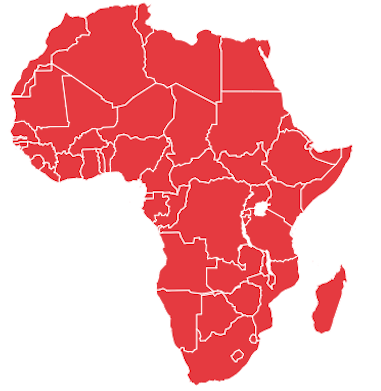Being Precise: 10 Free Resources for Understanding International Student Mobility
International student recruitment is a lot about dealing with statistical data. Where do students come from and where are they likely to go study? What is the usual age of the international student? For how long are they studying abroad? What kind of direction they are taking and what is next in the field?
So far, we haven’t been able to find a single perfect resource that would cover all of these topics for every continent or every discipline. What we found instead are 10 reliable sources that combined can provide useful and precise data. Use this data to improve your strategic planning or keep up with the current tendencies in international student recruitment!
GLOBAL RESOURCES
UNESCO INSTITUTE FOR STATISTICS
The UNESCO Institute for Statistics covers an extremely wide range of topics and regions. The Institute presents reports and statistics in higher and tertiary education in all continents. It also covers all the key elements related to international studies: preferred fields of study, graduation ratios or types of hosting and sending institutions. There is especially elaborate research on such regions as Asia and Southern Africa.
Our highlights for this source include this section with reports on tertiary education. You should also check this extremely useful map on international student mobility:
OECD – ORGANISATION FOR ECONOMIC CO-OPERATION AND DEVELOPMENT
 Policy-making cannot be effective without thorough research. OECD, the organisation that unites members from 35 governments, does exactly that. It collects and analyses massive quantities of data on every subject from trade to migration to economy to education. The result is a broad database with a very handy search engine that allows sorting out data both by topic and by country.
Policy-making cannot be effective without thorough research. OECD, the organisation that unites members from 35 governments, does exactly that. It collects and analyses massive quantities of data on every subject from trade to migration to economy to education. The result is a broad database with a very handy search engine that allows sorting out data both by topic and by country.
So, for example, if you want to know more about education in Bulgaria, you can easily access all the relevant reports with just a few clicks in OECD’s extensive Education section.
THE WORLD FACTBOOK (by CENTRAL INTELLIGENCE AGENCY)
 Knowing that we always have the Internet to crosscheck our ideas with facts is both reassuring and worrying. This is mostly due to the huge flows of uncurated and potentially inaccurate information. Which sources to trust and where to start from? How do we manage to find the right and unbiased data?
Knowing that we always have the Internet to crosscheck our ideas with facts is both reassuring and worrying. This is mostly due to the huge flows of uncurated and potentially inaccurate information. Which sources to trust and where to start from? How do we manage to find the right and unbiased data?
What we do is never trust only one source. But most of the times we start with data from the World Factbook by the Central Intelligence Agency. It covers 267 countries and territories in the world, providing data about economy, demographics, environment and other areas. While it’s not directly related to international student mobility, the data allows making informed guesses about tendencies in the future. For example, countries with a bigger percentage of young people are more likely to generate international students. Similarly, territories with big middle class tend to have higher rates of international student mobility.
Take a look at the map here:
THE WORLD BANK
 While most organisations tend to collect data from the Western world, The World Bank takes a less-traveled road and works mostly with developing countries. The main goal of the organisation is to tackle poverty and reduce the number of people living in undesirable conditions. But it coordinates its actions on research about the regions that are going to be in the international student mobility spotlight soon. In 5-15 years some of the countries that are now developing will build up their economic stamina and strengthen their middle class. And the tendency is always the same: a strong middle class encourages young people to study abroad. That is why we recommend taking a look at the research and reports on education from The World Bank: you may just find a new direction for your international student recruitment efforts.
While most organisations tend to collect data from the Western world, The World Bank takes a less-traveled road and works mostly with developing countries. The main goal of the organisation is to tackle poverty and reduce the number of people living in undesirable conditions. But it coordinates its actions on research about the regions that are going to be in the international student mobility spotlight soon. In 5-15 years some of the countries that are now developing will build up their economic stamina and strengthen their middle class. And the tendency is always the same: a strong middle class encourages young people to study abroad. That is why we recommend taking a look at the research and reports on education from The World Bank: you may just find a new direction for your international student recruitment efforts.
UNIVERSITY RANKINGS
 Extremely informative source about future trends in international student mobility are university rankings. Universities that are ranked highly have a variety of courses taught in English, strong research programs and advanced educational curriculum – three ingredients that are highly sought after by international students. Newcomers to the list (especially from developing countries) point out advancements in higher education that are attractive for mobile learners and at the same time show the future direction of international student recruitment.
Extremely informative source about future trends in international student mobility are university rankings. Universities that are ranked highly have a variety of courses taught in English, strong research programs and advanced educational curriculum – three ingredients that are highly sought after by international students. Newcomers to the list (especially from developing countries) point out advancements in higher education that are attractive for mobile learners and at the same time show the future direction of international student recruitment.
There are top 3 ranking sources you should take into consideration are the Academic Ranking of World Universities, QS World University Ranking and Times Higher Education World University Ranking.
RESOURCES BY REGION
EDUCATION IN ASIA AND AUSTRALIA:
 For more than a decade now, Asia was the key player in international student mobility.
For more than a decade now, Asia was the key player in international student mobility.
Even if the growth today starts to stabilise Asian countries will still have the biggest percentage of students abroad in upcoming years.
We‘ve found quite a lot of relevant platforms that might be helpful for understanding student mobility in Asia as well as the following most significant reports and events:
- Higher Education in Asia: Expanding Out, Expanding Up (UNESCO)
- Abstract SDG 4: “Ensure inclusive and equitable quality education and promote lifelong learning opportunities for all” of the Statistical Yearbook for Asia and the Pacific 2015 – facts and trends at the outset of the 2030 Development Agenda (ESCAP)
- Reports on education by ADB – Asian Development Bank
- The Student Mobility SIG Forum (IEAA – International Education Association of Australia)
EDUCATION IN AFRICA:
 With current demographic trends and economic growth, several African countries such as Nigeria or Morocco are already of interest for international student recruitment agents. More countries are about to join soon: young populations and emerging middle classes create a perfect and capable international student. While it’s hard to predict which countries will grow to compete with the leading markets for international students, some trends are already visible if you take a look at the statistical data available in the following sources and reports:
With current demographic trends and economic growth, several African countries such as Nigeria or Morocco are already of interest for international student recruitment agents. More countries are about to join soon: young populations and emerging middle classes create a perfect and capable international student. While it’s hard to predict which countries will grow to compete with the leading markets for international students, some trends are already visible if you take a look at the statistical data available in the following sources and reports:
- African Union Data Portal Map
- African Centre for Statistics by the United Nations Economic Commission for Africa
- International Student Mobility in Sub-Saharan Africa (UNESCO)
EDUCATION IN NORTH AMERICA
 The US and Canada are among the top international student destination countries in the world. Huge investments in the development of attractive curriculum and innovative technology hubs has enabled these countries to be the among the global leaders in education for years to come. What is interesting to know is that, compared to their inbound student mobility rates, Americans seem not so eager to send their students outside their own borders. The following sources provide useful information about international student recruitment and mobility in North America:
The US and Canada are among the top international student destination countries in the world. Huge investments in the development of attractive curriculum and innovative technology hubs has enabled these countries to be the among the global leaders in education for years to come. What is interesting to know is that, compared to their inbound student mobility rates, Americans seem not so eager to send their students outside their own borders. The following sources provide useful information about international student recruitment and mobility in North America:
- U.S. Department of Education, National Center for Education Statistics (NCES)
- Education in Canada: Attainment, Field of Study and Location of Study
- Education in Mexico (WENR)
- WES Regional Education Links: Americas
EDUCATION IN SOUTH AMERICA:
With regards to education, the current demographic situation in most South American countries is stabilising. International student mobility both across neighbouring countries and towards North America is on a slow but steady rise. Considering this region for recruiting international students is definitely a smart choice if you’re looking for more diversity in your mix.
- Regional Report about Education for All in Latin America and the Caribbean (UNESCO)
- UNESCO International Institute for Higher Education in Latin America and the Caribbean
- WES Regional Education Links: Americas
EDUCATION IN EUROPE:
 Quite a high number of our community members care about education in Europe as an opportunity for both inbound and outbound student migration. Probably the most useful website about statistics in Europe and at the same time, about education, is Eurostat. It covers the growth strategy for economy, language learning, rates of participation and much more.
Quite a high number of our community members care about education in Europe as an opportunity for both inbound and outbound student migration. Probably the most useful website about statistics in Europe and at the same time, about education, is Eurostat. It covers the growth strategy for economy, language learning, rates of participation and much more.
Hopefully, these resources will help you navigate through huge amount of information related to education and international student mobility that is available online.
What is your most used resource while planning student mobility?
Please share your links in the comments!













































